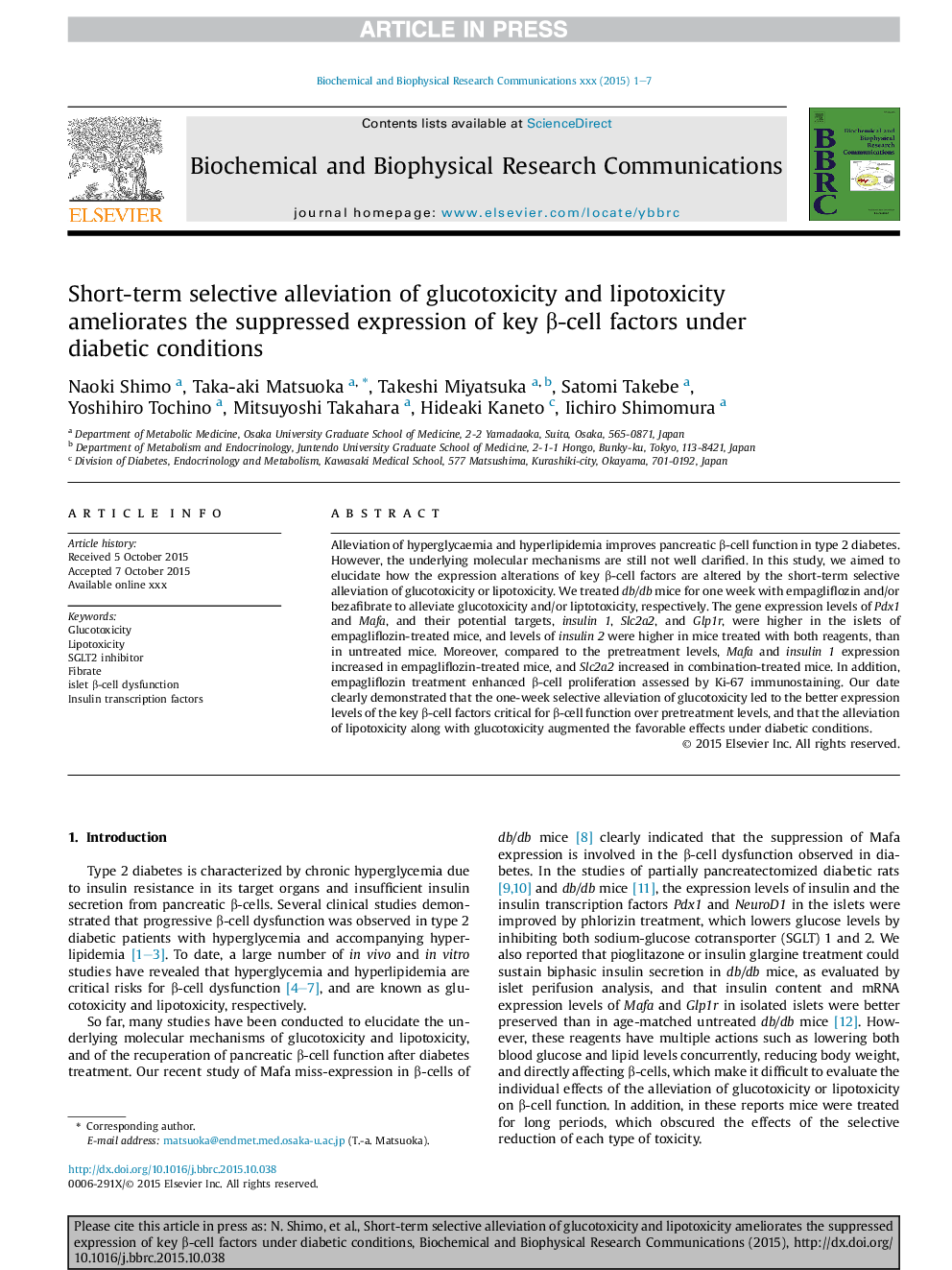| Article ID | Journal | Published Year | Pages | File Type |
|---|---|---|---|---|
| 10750709 | Biochemical and Biophysical Research Communications | 2015 | 7 Pages |
Abstract
Alleviation of hyperglycaemia and hyperlipidemia improves pancreatic β-cell function in type 2 diabetes. However, the underlying molecular mechanisms are still not well clarified. In this study, we aimed to elucidate how the expression alterations of key β-cell factors are altered by the short-term selective alleviation of glucotoxicity or lipotoxicity. We treated db/db mice for one week with empagliflozin and/or bezafibrate to alleviate glucotoxicity and/or liptotoxicity, respectively. The gene expression levels of Pdx1 and Mafa, and their potential targets, insulin 1, Slc2a2, and Glp1r, were higher in the islets of empagliflozin-treated mice, and levels of insulin 2 were higher in mice treated with both reagents, than in untreated mice. Moreover, compared to the pretreatment levels, Mafa and insulin 1 expression increased in empagliflozin-treated mice, and Slc2a2 increased in combination-treated mice. In addition, empagliflozin treatment enhanced β-cell proliferation assessed by Ki-67 immunostaining. Our date clearly demonstrated that the one-week selective alleviation of glucotoxicity led to the better expression levels of the key β-cell factors critical for β-cell function over pretreatment levels, and that the alleviation of lipotoxicity along with glucotoxicity augmented the favorable effects under diabetic conditions.
Related Topics
Life Sciences
Biochemistry, Genetics and Molecular Biology
Biochemistry
Authors
Naoki Shimo, Taka-aki Matsuoka, Takeshi Miyatsuka, Satomi Takebe, Yoshihiro Tochino, Mitsuyoshi Takahara, Hideaki Kaneto, Iichiro Shimomura,
